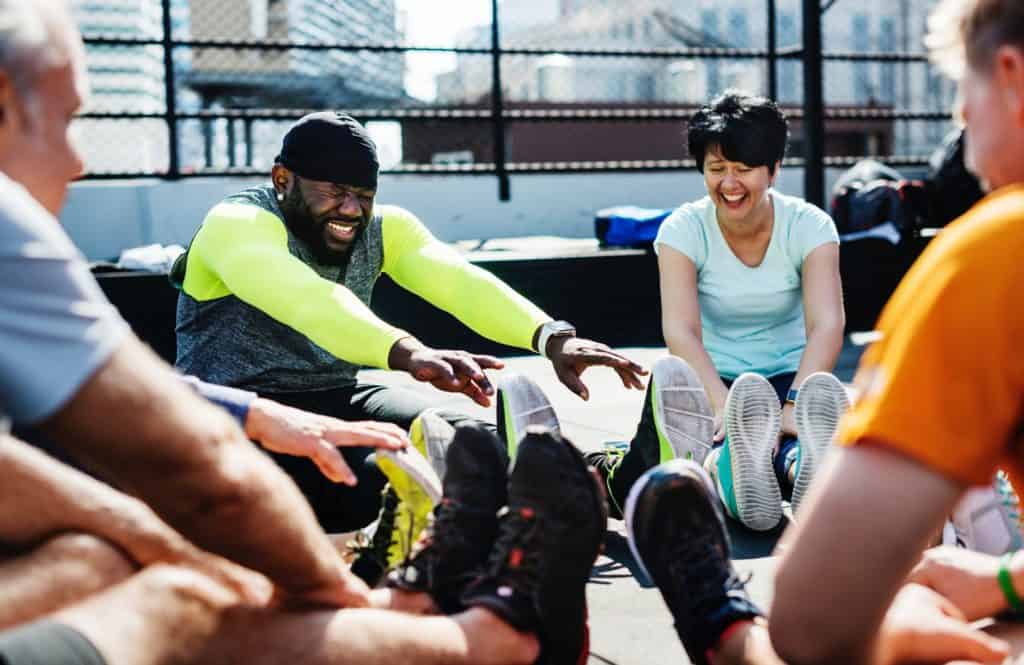Tips for Growing Your Calves
You want to grow your calves? Great! But why is that important? Well, while they may not be the most visible muscle group, your calves are an important aspect of overall health. Not only are they used during everyday activities like walking up stairs and running, but also for sports like tennis and soccer—and even dancing (think: ballet).
You use them when standing, hiking, or any other activity that involves moving your ankle in any fashion.
Plus, if you are thinking about competing in any form of physique or bodybuilding competition, your calves could be the deciding factor.
First off, what muscles make up your calves?
Your calves are made up of two muscles: the gastrocnemius and the soleus. The gastrocnemius is a large calf muscle that lies on top of the posterior (back) of your shin bone. It runs from your femur to your Achilles tendon and visible when you look at your legs from pretty much any angle, giving it its name “gastro” meaning “belly.” This muscle is responsible for flexing (bending) your ankle joint during walking, running, jumping and many other activities.
The soleus is a smaller muscle located underneath the larger gastrocnemius muscle. It helps to control pronation (rolling inwards) of our feet as we walk or run by working with other muscles in our lower legs during these movements.
Additionally, there are smaller frontal muscles that aren’t necessarily part of your calves, but still play a roll in how your ankle moves and can be exercised for health, mobility, or aesthetic reasons.
Don’t rely on seated calf raises
Seated calf raises are not the best way to grow your calves. They can be a good start, but you need to do more than just seated calf raises in order to build muscle and a well defined aesthetic. Seated calf raises alone will only hit part of your calves (gastrocnemius muscle), while standing or kneeling exercises also engage both sections of this large group of muscles (gastrocnemius and soleus).
The bottom line: don’t rely solely on seated calf raises! Lots of exercises from unilateral movements to huge lower body compounds all work the calves in various ways. Incorporate them all.
Pay attention to your form
Keeping your form as you lift can help you safely grow your calves.
- Keep your toes pointed forward and knees slightly bent at all times.
- Don’t let your knees cave in or out as you lift weight.
- Don’t let the weight of the bar pull you down toward the ground, causing a lot of stress on the knee joint.
- Don’t shrug up or arch back with each rep – keep it straight! You want to exercise your calves, not your back.
Use a wide range of reps and tempos
If you want to grow your calves, use a wide range of reps and tempos. Rep ranges from 8-12 are where it’s at, while tempos should be between 2-4 seconds up, 3-5 seconds down.
Tempo is key with any muscle group, by the way. Make sure you aren’t that guy just whipping weights around. Take your time and really feel the weight. If you cannot control the weight and move it slowly, it is too heavy for you.
Need some help?
Shape Success, Live Exceptionally
Hit that button, and get started today.
Mix in some dumbbell moves
For a great calf workout, use a variety of dumbbells. You can do this by using any ‘size’ weights and a variety of reps during your mesocycle for a good progresive overload scenario. If you’re using a lighter weight, do more reps and have less rest in between sets. If you are using heavier weights, do fewer reps and give yourself a bit more rest between sets.
The movement tempo should be apply to both, the concentric portion and the eccentric portion—and don’t forget about those pauses at the top and bottom of the lift.
When you start lifting heavier weights, speed up both phases of the lift so that you can use heavier weights for more total reps and sets.
Do unilateral exercises
Unilateral exercises are exercises that work the muscles on one side of the body. These are a good thing to include for your calves because they are a bi-lateral muscle group, meaning you have a calf on either side of your body (obviously).
Unilateral exercises are more effective than bilateral ones because they focus more attention on each individual muscle. This means you can push yourself harder and get more out of each workout than you would with regular straight lunges or squats. A good example would be barbell bench press. If you press 135lbs on a barbell it is much easier than if you were to press 65-70 pound dumbbells.
The reason for this is because you need to recruit more stabilizer muscles and mind-muscle connection to move weights when done unilaterally.
Here is an example of unilateral exercises for your calves:
- Bulgarian split squats—Stand with one foot forward and one back, resting on the ball of your back foot. Bend both knees until you reach 90 degrees at each knee joint (or as low as possible), then return to standing position by pushing off from the ball of your rear foot (you may need to hold onto something if it’s too difficult). Repeat 8–12 times per side before switching sides.
Don’t train them too often
Just like any other muscle, it is possible to overtrain them. You should never train them more than twice a week, and make sure to rest at least 48 hours between working your calves. Train your calves towards the end of your workout.
Compound movements almost always go first, after all.
Bigger calves are just a few tweaks away.
If you’re looking for a quick way to add some size and power to your calves, swap it up a bit. Do some seated calf raises, some standing calf raises, split squats, and other exercises that will grow them.
Your form matters too—from how high you lift your heels to how long you hold each rep before moving onto another set! Pay attention to these details while performing standing or seated calf raises.
Use a wide range of reps and tempos; mix in some dumbbell moves; do them at home if necessary (no gym membership required!).
TYour calves are one of the most undeveloped muscles in the body, but they can be built into huge shapes if you put in some effort. With all this information in mind, what are you waiting for? Get on it!
Let Us help You Out
At CONDITIONerd we are here to help you achieve better physical and mental health through exercise. Check out the plans we offer to our customers and see if you could benefit from working with our team. And if you have questions, you can always contact a CONDITIONerd team member.
Personal trainers, like those found here, can help guide you on your pathway towards reaching your fitness goals, whether that is getting bigger, stronger, faster, more lean, or just generally feeling better.
We can get you setup with a periodized workout plan, supplement information, and advice on nutrition to help you reach your goals.
The only thing you need is some motivation and a willingness to change some old habits.
Get into contact with us to find out what membership is right for you. In a CONDITIONerd program, you’ll be surrounded by others who can help you to get where you want to be.

